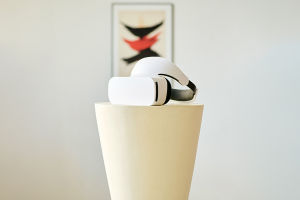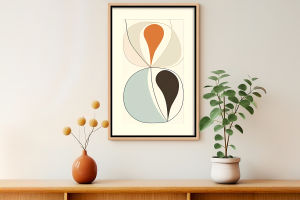If you've ever stood in front of a painting and felt a sudden rush of warmth or a quiet chill, chances are the artist was playing with temperature—color temperature, to be exact.
In oil painting, the dance between warm and cool hues is one of the most powerful ways to guide the viewer's emotions.
It's not just about mixing pretty colors; it's about controlling atmosphere, depth, and mood in ways that a simple subject alone can't achieve.
Understanding Warm and Cool Colors
Warm colors— reds, oranges, and yellows—tend to advance visually and feel inviting, energetic, or even intense.
Cool colors— blues, greens, and violets—often recede and bring calm, mystery, or distance. But here's the catch: temperature is relative. A yellow can feel cool next to orange but warm next to blue. In oil painting, this relativity is your playground.
An effective warm–cool contrast isn't simply red against blue. It's about creating a subtle push and pull that the viewer feels before they consciously notice it. For example, a portrait with a warm-lit face and a cooler shadow can make the subject feel more alive, with light and shade working like a dialogue.
Choosing the Right Oil Paints for Mixing
Not all paints are created equal. Pigment type, transparency, and tinting strength will affect how your mixes behave. Here's a practical approach:
1. Dual-Primary Palette – Keep both a warm and a cool version of each primary color. For example, have cadmium red (warm) and alizarin crimson (cool) for reds, ultramarine blue (warm) and phthalo blue (cool) for blues, cadmium yellow (warm) and lemon yellow (cool) for yellows. This gives you clean mixes without muddying.
2. Use earth tones strategically – Colors like burnt sienna, yellow ochre, and raw umber can bridge warm and cool zones naturally without overpowering them.
3. Mind the opacity – Transparent paints work beautifully for glazing to adjust temperature without repainting entire sections.
Mixing for Temperature, Not Just Color
A common beginner mistake is chasing the "right" color on the palette instead of thinking about how warm or cool it should feel in the composition. Here's how to mix with temperature in mind:
• Warm up shadows subtly – Adding a touch of burnt sienna or transparent oxide red to shadow colors can keep them from feeling dead.
• Cool down highlights in certain settings – For example, a landscape under morning light might have cooler highlights because the light is softer and bluer.
• Use complements to control intensity – Mixing a small amount of a color's complement can neutralize it while still keeping the temperature intact.
How Temperature Shapes Emotion
Temperature isn't just a technical tool—it's emotional language. Painters like Joaquín Sorolla used warm–cool contrasts to give his seaside scenes shimmering vitality, while Edward Hopper employed cooler tones to amplify solitude and stillness.
• Warm dominance can make a painting feel passionate, energetic, and welcoming. Think of a still life bathed in golden afternoon light.
• Cool dominance can create mystery, melancholy, or serenity. Imagine a foggy harbor painted with muted blues and greens.
• Balanced interplay can convey realism and subtle complexity, where neither warmth nor coolness overwhelms, leaving space for the viewer's imagination.
Practical Challenges and How to Overcome Them
Even experienced artists run into issues with warm–cool mixing:
1. Muddy colors from overmixing – Solution: Mix on the canvas in thin layers rather than fully blending on the palette. Let the viewer's eye do some of the mixing.
2. Temperature shifts when paint dries – Some pigments dry darker or cooler; keep test swatches nearby to anticipate changes.
3. Losing the focal point – If everything is warm or everything is cool, the painting can feel flat. Reserve your most extreme warm–cool contrast for the main subject to pull the eye in.
Making Temperature Work in Your Next Painting
Try this as an exercise: Paint a simple subject—say, a coffee cup—twice. In one version, let warm colors dominate, with cool accents for shadow. In the other, reverse it. Compare how your feelings toward each version shift. This practice trains your eye to see temperature as a storytelling choice, not just a technical step.
Oil painting gives you the luxury of slow drying and deep blending, which means you can layer warm glazes over cool underpainting, or vice versa, to create complex visual effects. Once you start thinking in terms of temperature, your work can gain a richness and emotional range that pure color matching can't deliver.
Next time you squeeze paint onto your palette, don't just think about hue. Ask yourself—should this part of the painting feel like a sunny afternoon or a shadowy alley? That small question can change everything.
If you've experimented with warm–cool contrast before, what's your go-to color pairing that always delivers the mood you want? Your answer might inspire another artist's next masterpiece.


